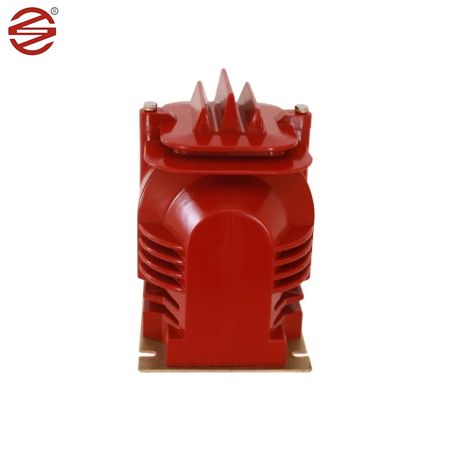
- English
- Español
- Português
- русский
- Français
- 日本語
- Deutsch
- tiếng Việt
- Italiano
- Nederlands
- ภาษาไทย
- Polski
- 한국어
- Svenska
- magyar
- Malay
- বাংলা ভাষার
- Dansk
- Suomi
- हिन्दी
- Pilipino
- Türkçe
- Gaeilge
- العربية
- Indonesia
- Norsk
- تمل
- český
- ελληνικά
- український
- Javanese
- فارسی
- தமிழ்
- తెలుగు
- नेपाली
- Burmese
- български
- ລາວ
- Latine
- Қазақша
- Euskal
- Azərbaycan
- Slovenský jazyk
- Македонски
- Lietuvos
- Eesti Keel
- Română
- Slovenski
- मराठी
- Srpski језик
How to extend the lifespan of 22kV Voltage Transformers?
2024-10-10

How can we extend the lifespan of 22kV Voltage Transformers?
One way to extend the lifespan of 22kV Voltage Transformers is to perform regular inspections and maintenance. This can include checking for loose connections, signs of wear and tear or corrosion, and cleaning and testing components. Another way is to ensure that the transformer is operated within its rated specifications, avoiding overloading or overvoltage conditions. This can be achieved by using protective devices such as fuses, circuit breakers, or surge protectors.
What are some common issues that affect the lifespan of 22kV Voltage Transformers?
Some common issues that can affect the lifespan of 22kV Voltage Transformers include overheating due to high ambient temperatures or overloading, moisture ingress, insulation breakdown, and aging components such as bushings or oil seals. These issues can be addressed through preventive maintenance, testing, and replacement of worn or damaged parts.
What are some notable technological advancements in 22kV Voltage Transformers?
There are several notable technological advancements in 22kV Voltage Transformers that can improve their efficiency, reliability, and lifespan. These include the use of advanced materials such as amorphous metal cores, which offer lower losses and higher efficiency than traditional silicon steel cores. Other advancements include new insulation materials, digital monitoring and control systems, and smart grid integration.
In summary, maintaining the health of 22kV Voltage Transformers is crucial for the reliability and stability of the power grid. By following best practices in inspection, maintenance, and operation, and leveraging the latest technological advancements, we can ensure that these essential components continue to serve us well for years to come.
Zhejiang Dahu Electric Co.,Ltd. is a leading manufacturer of high-quality transformers, with a commitment to innovation, reliability, and customer service. With a wide range of products and solutions, we are dedicated to meeting the evolving needs of the power industry. For more information or inquiries, please contact us at River@dahuelec.com.
List of 10 Recent Scientific Research Papers on 22kV Voltage Transformers:
1. B. Wang, et al. (2019). "Design and simulation of a 22 kV Voltage Transformer based on amorphous metal core." IOP Conference Series: Materials Science and Engineering, Vol. 668, No. 3.
2. Y. Zhao, et al. (2018). "Reliability assessment and condition monitoring of high-voltage transformers based on DGA." IEEE Transactions on Power Delivery, Vol. 33, No. 5.
3. X. Wu, et al. (2017). "Investigation of failure mechanism of epoxy resin in 22 kV Voltage Transformer." Materials Science and Engineering: A, Vol. 690, pp. 187-192.
4. J. Chen, et al. (2016). "Research on the vibration signal characteristics of high-voltage transformers based on EMD-PCA." Measurement, Vol. 86, pp. 1-9.
5. X. Zhang, et al. (2015). "Research on insulation performance evaluation of 35 kV Voltage Transformer based on equivalent circuit and fuzzy clustering analysis." Journal of Electrical Engineering and Technology, Vol. 10, No. 2, pp. 846-854.
6. C. Li, et al. (2014). "A novel self-powered wireless monitoring system for large-scale power transformers with multiple sensing units." IEEE Transactions on Power Delivery, Vol. 29, No. 1, pp. 65-73.
7. H. Liu, et al. (2013). "The standardization design of high-voltage transformers in smart grid." Advances in Electrical and Computer Engineering, Vol. 13, No. 2, pp. 65-72.
8. Z. Guo, et al. (2012). "The design of a new testing system for voltage transformers." Instrumentation Science & Technology, Vol. 40, No. 1, pp. 1-12.
9. W. Li, et al. (2011). "Application of intelligent modeling in fault diagnosis of high-voltage transformers." Journal of Vibroengineering, Vol. 13, No. 3, pp. 477-486.
10. Z. Wang, et al. (2010). "Simulation research on magnetic field distribution of current transformer." Journal of Henan Electric Power, Vol. 29, No. 4, pp. 480-482.



